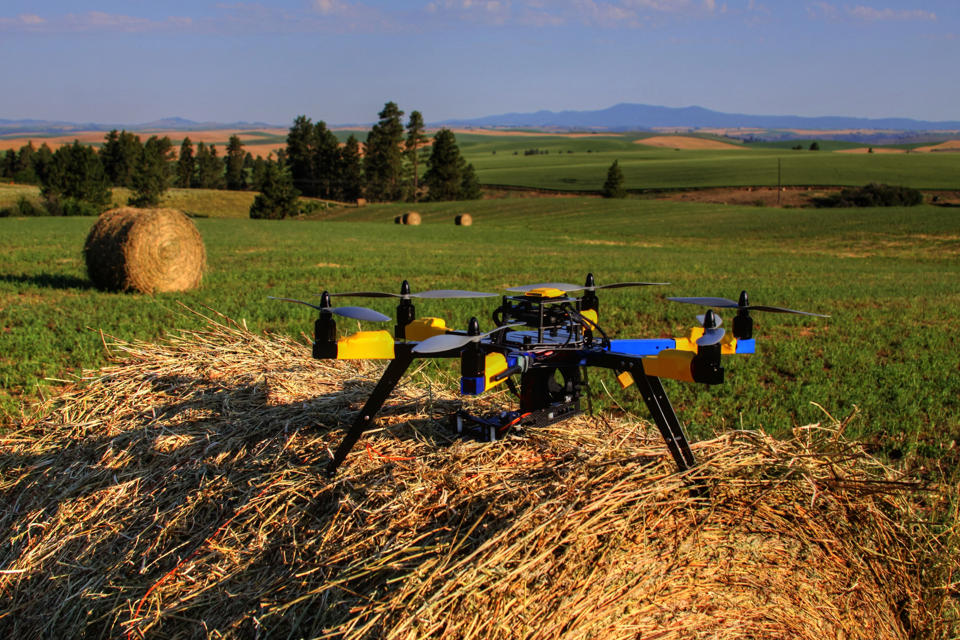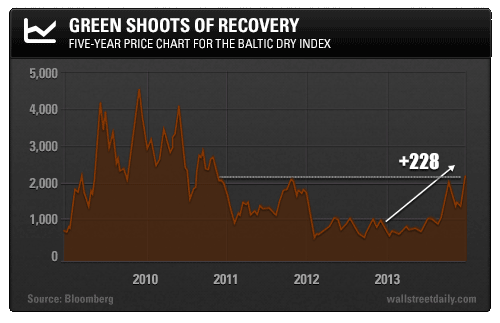Energy & Commodities

While Americans are abuzz about Amazon’s plans to use self-guided drones to deliver packages, most future unmanned aircraft may operate far from the nation’s large population centers.
Experts point to agriculture as the most promising commercial market for drones because the technology is a perfect fit for large-scale farms and vast rural areas where privacy and safety issues are less of a concern.
Already, farmers, researchers and companies are developing unmanned aircraft systems equipped with cameras and other sensors to survey crops, monitor for disease or precision-spray pesticides and fertilizers. And the possibilities are endless: Flying gizmos could be used to ward off birds from fields, pollinate trees, do snow surveys to forecast water supply, monitor irrigation, or plant and harvest crops.
….full article HERE

Canadian regulators urged the government to approve the country’s first overseas oil-export project on Thursday, concluding that Enbridge Inc’s C$7.9 billion (US$7.4 billion) Northern Gateway pipeline plan posed little risk to the environment if the company complied with some 200 conditions.
Two years after a panel of environmental and energy regulators began hearings into the project, it sided against the line’s many opponents and recommended the completion of a project that would allow Canada to expand sales of crude extracted from its oil sands to Asia.
Starting near Edmonton, Alberta, Northern Gateway would run 1,177 km (730 miles) – mostly through the pristine wilderness of northern British Columbia – to Kitimat, a deepwater port on the Pacific Coast.
full article HERE

 As we come to the end of 2013, it’s a good time to reflect on some of the biggest resources stories of the year. One that immediately comes to mind is the U.S. energy resurgence and its tremendous effect on oil (NYMEX:CLF14) and gas (NYMEX:NGF14).
As we come to the end of 2013, it’s a good time to reflect on some of the biggest resources stories of the year. One that immediately comes to mind is the U.S. energy resurgence and its tremendous effect on oil (NYMEX:CLF14) and gas (NYMEX:NGF14).
Only a few years ago, we were contemplating the supply constraints facing the petroleum industry, as many major oil fields around the world were declining in production. Now, with thedisruptive technology in shale oil and gas, we may be looking forward to decades of drilling.
Two charts clearly illustrate the incredible growth in oil and gas. While there are many shale areas around the U.S., there are a few notable hot beds of activity. Regarding the domestic production of tight oil, most of the growth has been in the Eagle Ford area that’s outside of San Antonio, Texas, the Bakken formation in Montana and North Dakota, and the Permian basin in West Texas.
At the beginning of 2011, the selected shale areas shown below were producing less than 1 million barrels of tight oil per day. Now, production is nearing 2.5 million barrels per day.

Shale gas in the U.S. has also taken off in recent years, with the Marcellus shale in Pennsylvania and West Virginia, Haynesville in Louisiana and Texas, and Barnett in Texas contributing to the majority of the growth, according to the U.S. Energy Information Administration (EIA). Since 2010, natural gas production among the many shale areas jumped from under 10 billion cubic feet per day to about 27 billion cubic feet per day.


 Energy analyst discusses the outlook for natural gas and oil.
Energy analyst discusses the outlook for natural gas and oil.
Phil Flynn is senior energy analyst and a futures account executive at Chicago-based The Price Futures Group. He is one of the world’s leading energy market analysts and a daily contributor to Fox Business Network, where he provides market updates and analysis. HAI managing editor Sumit Roy recently caught up with Flynn to discuss the latest developments in the energy markets.
HardAssetsInvestor: Natural gas has been rallying recently, and now it’s at a seven-month high. Is it solely cold weather that’s driving up prices?
Phil Flynn: A lot of it obviously is the cold temperatures. It’s been cold, and based on the weather forecasts we’re seeing, it’s not going to get a heck of a lot warmer. In the next two weeks, we should see some substantial drawdowns in inventory. Having said that, yes, it is definitely the cold weather that’s given us this dynamic move, but you don’t want to underestimate the nonheat-related demand. There is demand growing everywhere.
While the cold weather seems to be overshadowing that right now, it’s definitely a story that’s going to continue. Manufacturing businesses are going to take advantage of these low natural gas prices and you’re going to see the nonheat-related demand continue to grow.
It’s going to continue to astound people. Our exports are a lot stronger; we’re going to be seeing a lot of natural gas going to Mexico, and they’re approving additional exports a lot more quickly than anybody thought possible.
Weather’s definitely your headline, and we probably wouldn’t be moving up like this if it weren’t cold, but there’s definitely more to it than just the weather.
HAI: Do you think it’s too late for investors to get in for this winter run?
Flynn: I don’t think so. Obviously, we could see some pullbacks along the way. But to me, there could be significant upside left in this market. The only concern we have at the moment is that the market is a bit overbought and it might try to shake some people out. But having said that, we broke out of a major channel to the upside.
We really do seem to be gaining some momentum. While we might be able to pull back to $4, it’s interesting that before, a lot of people thought that $4 would be a ceiling. Now it looks like it could be the floor, long term. I could foresee a scenario, if some of these colder, long-term forecasts come to fruition, that we could very easily test $4.50. And we might even surprise some people and move a bit higher.
It’s awfully early to be having these cold temperatures. And we’ve been lulled to sleep in the past, because the last couple of years, we’ve had some warmer-than-average winters and cooler-than-average summers. We really haven’t tested this market on full cylinders.
The way the weather is right now, how early it is in the season, we may really test the limit of the demand side, and it may surprise some people on the upside; mainly because, as I said, we are seeing a lot of nonheat-related demand as well. You may see more surprises on the upside than the downside.
…read page 2 HERE
….also:

Nostradamus predicted that a great nation would rise to unspeakable glory. And then see it all come crashing down.
Was he referring to the United States?
Because we may be on the verge of realizing “unspeakable glory.”
Goldman Sachs’ (GS) U.S. Equity Strategist, David Kostin, expects domestic GDP growth to hit 3% in 2014. That’s nearly double the 1.7% growth rate for this year.
That’s not the only shocking revelation in the market, though.
You see, unlike most leading economic indicators, there’s one that’s impervious to manipulation. It’s immune to sentiment, too.
Heck, it’s darn near the closest thing to an economic crystal ball we’ve got.
And it’s suggesting that incredible things are ahead in 2014. Not just for the United States, but for the entire global economy.
We’re Long Overdue
It’s been a long time since we checked in on the Baltic Dry Index (BDI).













